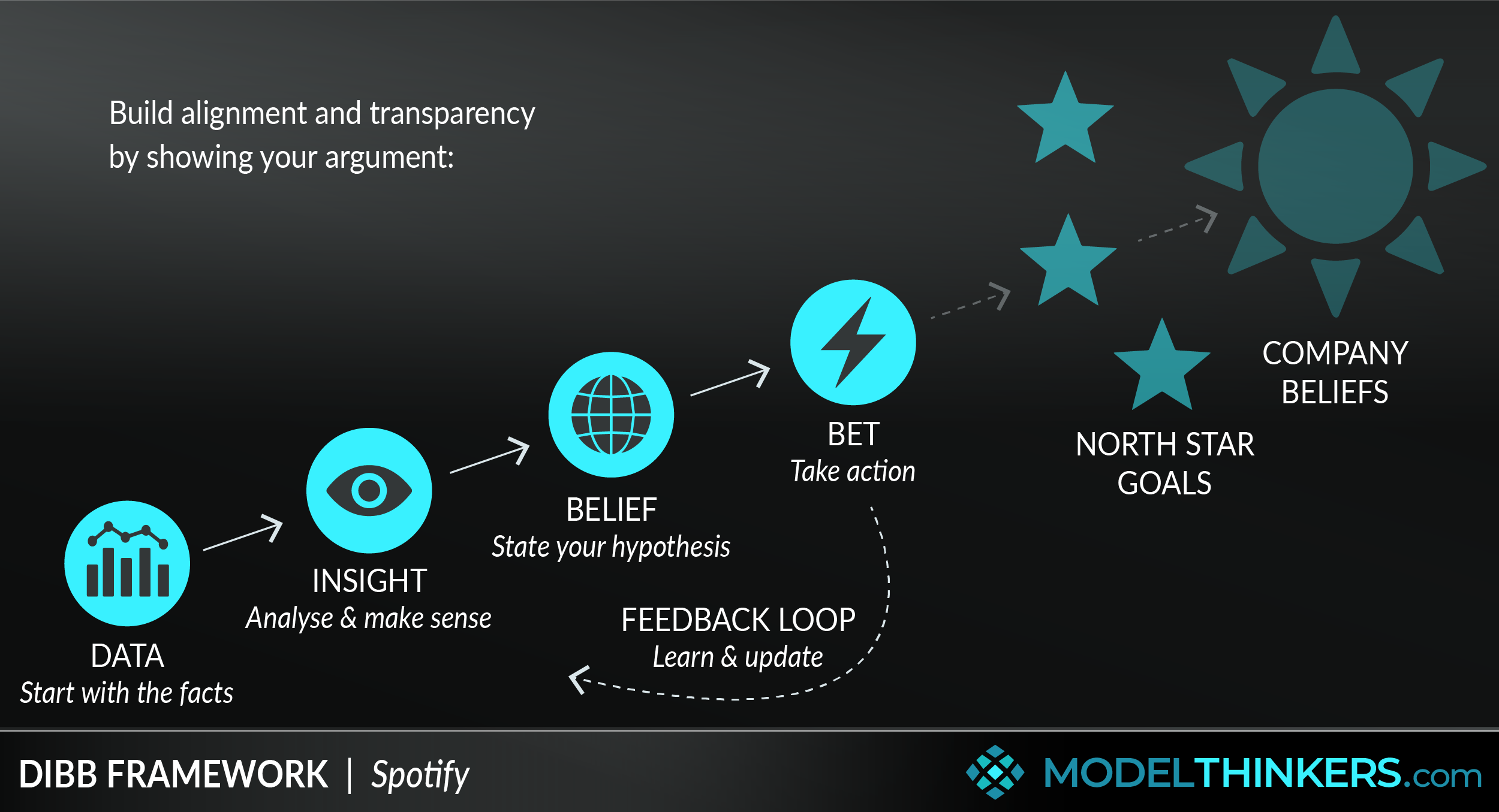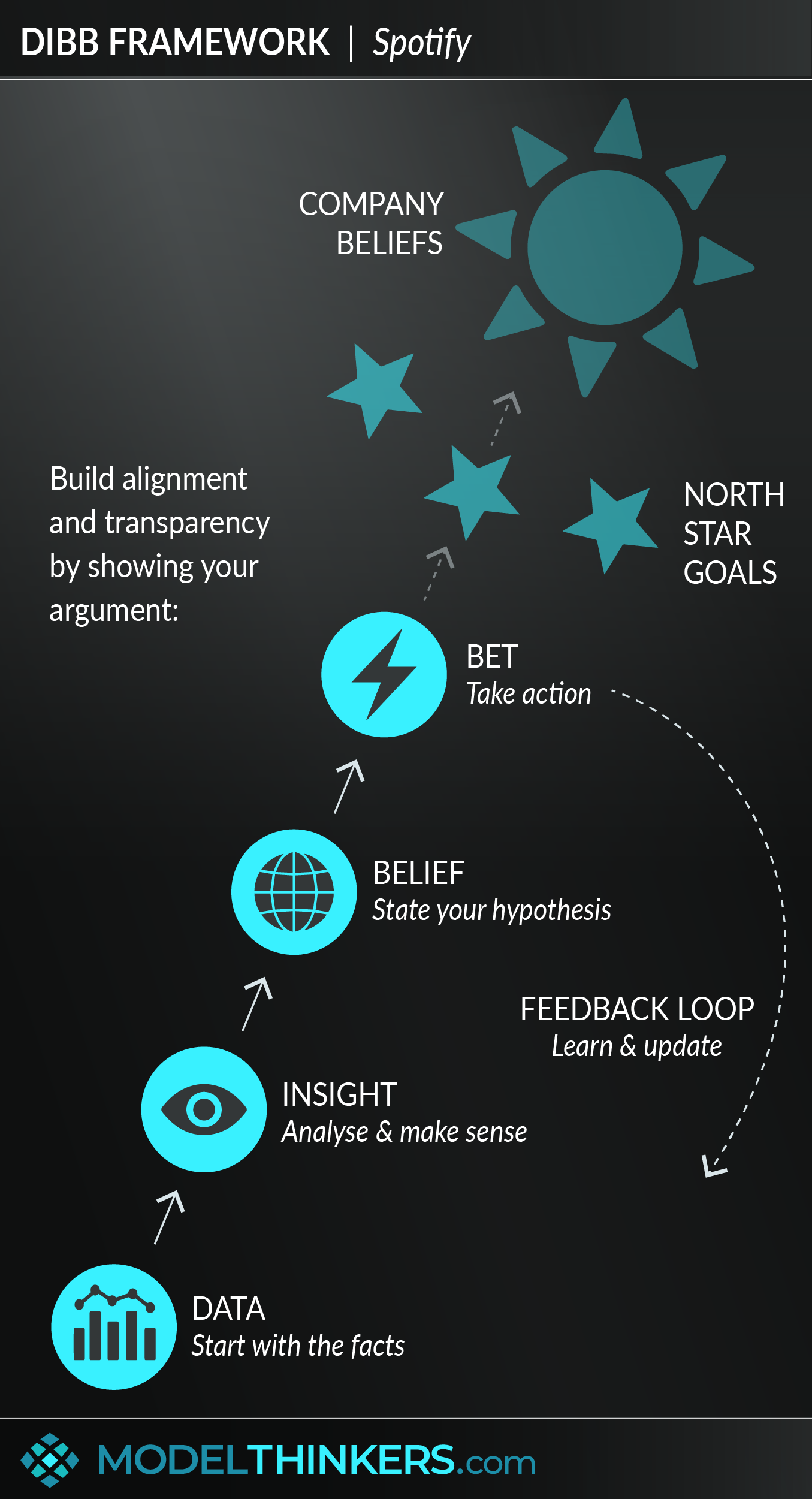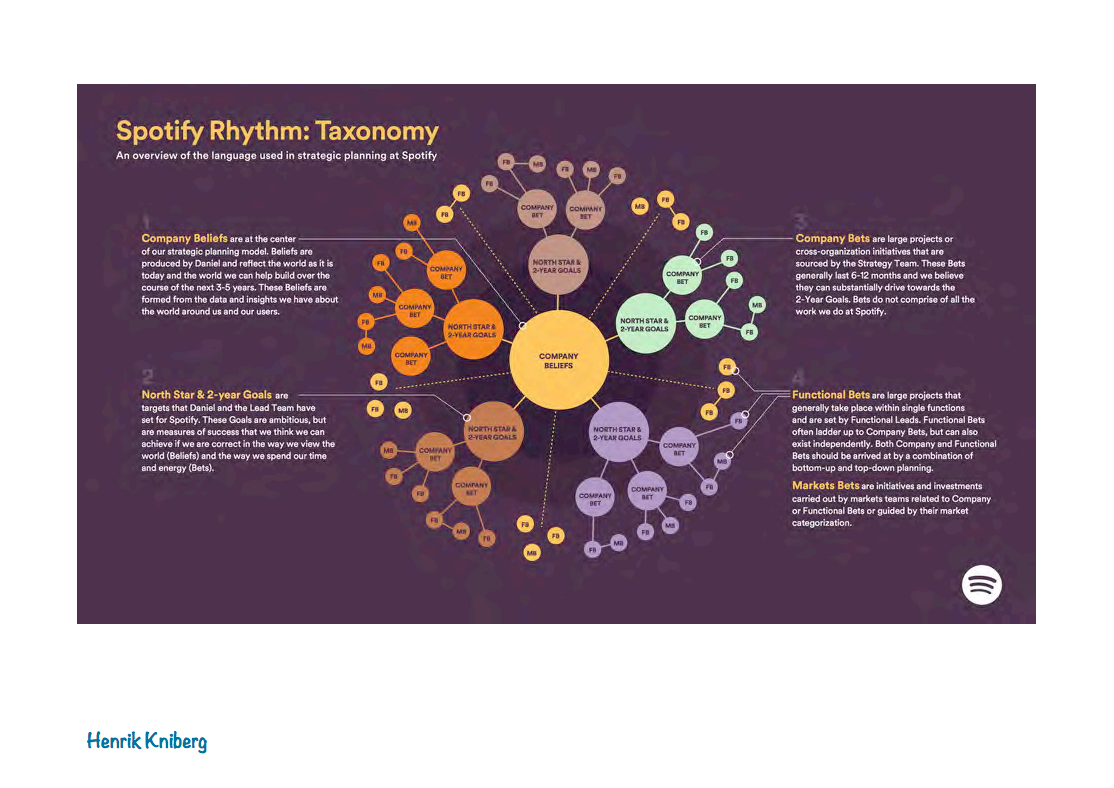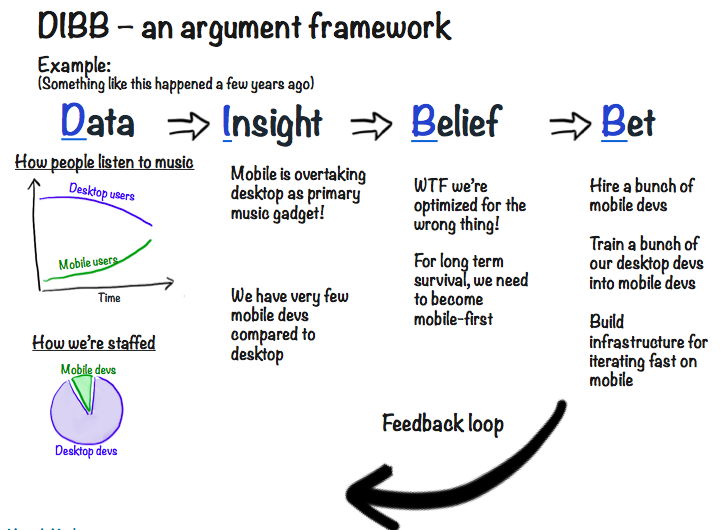

 0 saved
0 saved
 30K views
30K views








How do companies and individuals support data-driven cultures to innovate and deliver greater value? How do you encourage alignment across diverse teams at scale? And how do you efficiently capture an argument for action, complete with its assumptions, to encourage debate and understanding? One option to help achieve all of this is to use an approach from Spotify.
The DIBB Framework involves starting with Data (D) and the observable facts; distilling an Insight (I) from that data; stating a Belief (B) or hypothesis based on the insight; and finally defining a Bet (B) to pursue and test the belief.
FROM BELIEF TO BETS.
The DIBB Framework was developed as part of the broader ‘Spotify Rhythm’ and their evolving version of scaled Agile Methodology. It involves establishing cascading points of alignment, similar to traditional notions of moving from strategy to tactics, and for Spotify consists of:
-
Company Beliefs: The strategic understanding of the world and the resultant company focus over the next 3 to 5 years.
-
North Star and 2-year Goals: The handful of ambitious and measurable targets aligned to the beliefs.
-
Bets: at three levels:
-
Company Bets: large cross-organisational projects often lasting 6 to 12 months.
-
Functional Bets: generally large function-based projects aligning to Company Bets.
-
Marketing Bets: smaller more rapid initiatives and investments by teams.
-
Spotify displays Company Bets via a ‘Bets Board’, an online Kanban board showing the respective priorities and progress of each large bet – this was all about making the hard decisions of identifying the most important focus for resources and energy. The Bet Board is a key point of alignment for functions and teams alike. Each bet was linked to a two-page document: the front page had an overview including the primary sponsor, stakeholders, success metrics, and related bets; while the second page was a DIBB summary outlining the ‘why’ and ‘what’ of the bet. See the In Practice drop down for an example.
IN REALITY.
The DIBB Framework was surfaced by Henrik Kniberg who outlined it in a number of presentations around 2016 (see Origins for more). He pointed to the importance of updating and challenging bets with new information from the feedback loops that action provides, and that such bets need to be used as a guide for high-value action rather than a ‘stick’ to limit autonomy. In addition, Kniberg discussed how applying DIBBs often tended to be non-linear and messy rather than working through progressive stages.
Importantly, the intention behind the process is to provide greater transparency and direction, and that includes the ability for individuals to challenge a belief, or even insights, based on new or alternative data, thus arguing for an alternative bet.
IN YOUR LATTICEWORK.
The DIBB Framework joins a range of approaches that draws much from the Scientific Method, and is particularly reminiscent of the OODA Loop, though the latter is typically about rapid action and fast iterations. The DIBB Framework uses Kanban for its Bets Boards, and is a strong partner for the application of Agile Methodology. The bets themselves might leverage Minimum Viable Products, Riskiest Assumption Tests, or even Prototypes and, in terms of making the most of each bet, you might also want to consider applying Return on Failure.




- Start with the facts.
Base your action on data and a deeper understanding of what is happening in the world, with your stakeholders and in the market. Focus on collecting information that matters. You might consider market trends, sales, engagement rates, customer behaviour, profit and loss – anything relevant which might lead to a deeper understanding or new insights.
- Draw insights.
Work through the data and information to find the possible insights. This means looking for patterns, exploring potential questions, or using predictive analysis models to understand trends and implications.
- Identify beliefs.
State a hypothesis based on those insights. These are not facts, they’re beliefs and theories based on your current understanding and analysis of the facts.
- Make a bet.
Commit to an action to either test or capitalise on the belief — generally both. Know that such bets and beliefs are not fixed, but will be updated with feedback loops gained through taking action. Be sure to define the expected outcomes of your bet, including success metrics and predictions based on your current belief.
- Use a Bet Board.
Consider prioritising and displaying your bets for greater transparency and to allow people to both debate them and align to them more effectively.
One of the strengths and challenges of the DIBB Framework is that it purports to start from the data. The strength here is that it is based on objective information, the challenge is that there is always so much information and data to consider, and there is no point of defining a problem or area of focus upfront. Even the Scientific Method typically poses a question to help focus research efforts. In reality, most people and teams will be accessing data with an agenda that isn't covered in this framework. That said, the extreme approach of ‘starting with data’ over a problem statement or focus, does send a message about a data-driven culture and decision making.
Finally, it's worth adding a word of warning about the 'Spotify Model' that the DIBB Framework comes from. A few obvious but necessary points include that DIBB was used several years ago in parts of the business, it's unclear how much of Spotify use it today. Also that while Spotify's approach to Agile is often held up as an exemplar, Henrik Kniberg himself wanted to correct that explaining: "In articles or talks like this it may come across that Spotify is some sort of agile nirvana where everything just works and that is simply not true." Yes, we recommend that you draw lessons from Spotify but also know that they are no silver bullets and will need to be contextualised to your culture and challenges.
Henrik Kniberg’s exploration of DIBB at Spotify.
Henrick Kniberg is an experienced Agile and Lean Coach who has spoken about this approach on a number of occasions, see Origins for more. He has captured the Taxonomy of the Spotify Rhythm below:

Beyond that, here is a slide from one of Kniberg’s presentations that outlines a (semi-fictional) example of DIBB at Spotify.

s
The DIBB Framework was developed in parts of Spotify as part of their broader Spotify Rhythm and approach to Agile Methodology, though it's unclear how much of the business still uses the approach today.
Henrik Kniberg, a Lean and Agile coach who worked at Lego and Spotify and now works at Crisp, was one of the key people who shared the DIBB Framework as a means to develop greater alignment in scaled agile organisations. You can see his original 2016 blog post about it here, and a presentation on it in Africa during the same year here.
 My Notes
My Notes
Oops, That’s Members’ Only!
Fortunately, it only costs US$5/month to Join ModelThinkers and access everything so that you can rapidly discover, learn, and apply the world’s most powerful ideas.
ModelThinkers membership at a glance:






“Yeah, we hate pop ups too. But we wanted to let you know that, with ModelThinkers, we’re making it easier for you to adapt, innovate and create value. We hope you’ll join us and the growing community of ModelThinkers today.”




















































































